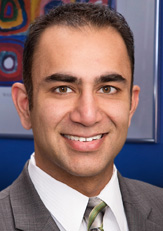By Kapil G. Kapoor, MD, FACS
Wagner Macula & Retina Center
Remember a few decades ago when there was all this noise about the Human Genome Project? You know – that whole bit where we would determine the sequence of ALL the nucleotide base pairs that make up the human DNA and map and identify every single one of the genes? The NIH funded this and it evolved into the world’s largest collaborative biologic project ever at the time! The whole time all this computing was going on and the buzz was spreading, the underlying anticipation was – other than pure scientific gain of course – one day analysis of the data from the Human Genome Project would translate into potentially revolutionary advances in medicine and biotechnology. And while I’ll be the first to admit that our generation is far too guilty of using superlatives gratuitously, claiming every novel thing is the best thing since sliced bread, this time it might actually be true. For the first time ever a novel gene based therapy has been FDA approved to treat an inherited disease for vision loss.
Luxturna (voretigene neparvovec, Spark Therapeutics) recently gained unanimous FDA approval for the treatment of patients with confirmed biallelic RPE65 mutation-associated retinal dystrophy. This was ten years after the first Phase I trial of Luxturna began and five years after the 2012 phase III trial. Biallelic RPE65 mutation associated retinal dystrophy affects approximately 1,000 to 2,000 patients in the United States and leads to vision loss that can cause complete blindness in certain patients, often during childhood or adolescence. This means a patient has a mutation in both copies of the RPE65 gene – the particular gene responsible for providing instructions for an enzyme critical for producing normal vision. Absence of the gene leads to absence of RPE65 and resultant impaired vision.
Luxturna corrects this by using a naturally occurring adeno-associated virus that has been modified using recombinant DNA techniques to deliver the normal human RPE65 gene directly to retinal cells. The administration of Luxturna is by subretinal injection of the medicine by a skilled surgical technique. This involves a procedure in the operating room in which a retinal surgeon vacuums out the vitreous fluid in the back of the eye with microscopic instruments, and then places the medicine underneath the extremely delicate neurosensory retina that serves as the final interface between sending visual signals to the brain.
Of course the optimism behind Luxturna is that this is simply the beginning. This is just one of the genes. There are at least 250 genes involved in the visual pathway responsible for producing normal vision, and hopefully this is just the first step to reducing inherited sources of blindness to a mere afterthought. At Wagner Macula & Retina Center we remain committed to providing access to the most novel treatments available. To learn more about this treatment or other research development we are working on in our research department, please jump on our website, or call us and ask to speak to our research study coordinators!
 Kapil G. Kapoor, MD is a Board certified ophthalmologist specializing in vitreoretinal surgery. wagnerretina.com
Kapil G. Kapoor, MD is a Board certified ophthalmologist specializing in vitreoretinal surgery. wagnerretina.com

